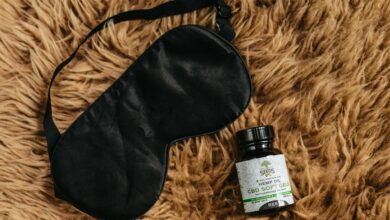What Is Cbd Used for

CBD, or cannabidiol, is increasingly recognized for its potential therapeutic applications. It is primarily utilized for pain relief and anxiety management, offering a non-intoxicating alternative to traditional medications. Many individuals are exploring various forms of CBD, such as oils and edibles, to enhance their wellness routines. Understanding how CBD interacts with the body can reveal deeper insights into its benefits and implications for overall health. What mechanisms drive its effectiveness?
Understanding CBD and Its Origins
Cannabidiol, commonly known as CBD, is a compound derived from the cannabis plant. Its history dates back to ancient civilizations, where it was utilized for various purposes.
CBD extraction methods have evolved significantly, ranging from traditional techniques to modern advancements, ensuring higher purity and potency. This evolution reflects a growing interest in the potential benefits of CBD, appealing to those seeking freedom in wellness choices.
Common Therapeutic Uses of CBD
CBD is increasingly recognized for its potential therapeutic applications, drawing attention from both researchers and consumers.
Commonly cited uses include pain relief and anxiety reduction. Many individuals seek CBD as a natural alternative to conventional medications, appreciating its non-intoxicating nature.
As public interest grows, so does the exploration of CBD's effectiveness in managing various health concerns, promoting a sense of well-being.
The Science Behind CBD's Effects
Although much remains to be understood, the science behind CBD's effects is grounded in its interaction with the endocannabinoid system (ECS), a complex network of receptors and neurotransmitters that plays a crucial role in regulating various physiological processes.
CBD interacts primarily with cannabinoid receptors, influencing the ECS to potentially promote balance and homeostasis within the body, impacting mood, pain, and inflammation.
How to Incorporate CBD Into Your Wellness Routine
Incorporating CBD into a wellness routine can be approached in various ways, depending on individual preferences and health goals.
Users may choose from product types such as oils, capsules, or edibles.
It is essential to follow dosage recommendations tailored to one's specific needs.
Start with a low dose and gradually increase to find the optimal amount for desired effects, promoting overall well-being.
Conclusion
In conclusion, CBD serves as a versatile option for those seeking natural relief from various ailments, much like a soothing balm for the mind and body. Its potential benefits in managing pain, anxiety, and inflammation make it an appealing alternative to traditional medications. As research continues to unfold, individuals may find that incorporating CBD into their wellness routines can enhance their overall quality of life, promoting a sense of balance and well-being in an increasingly hectic world.






